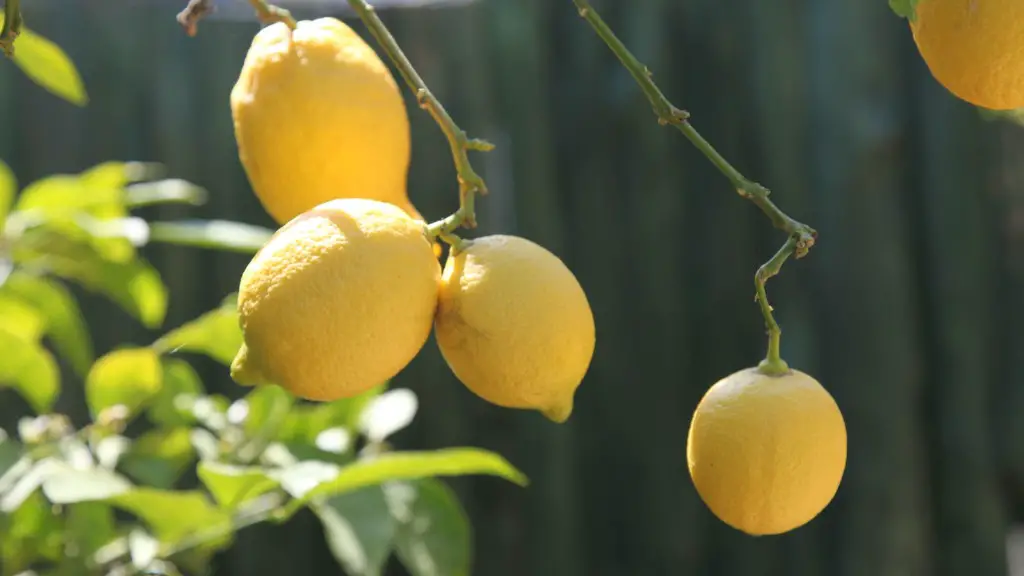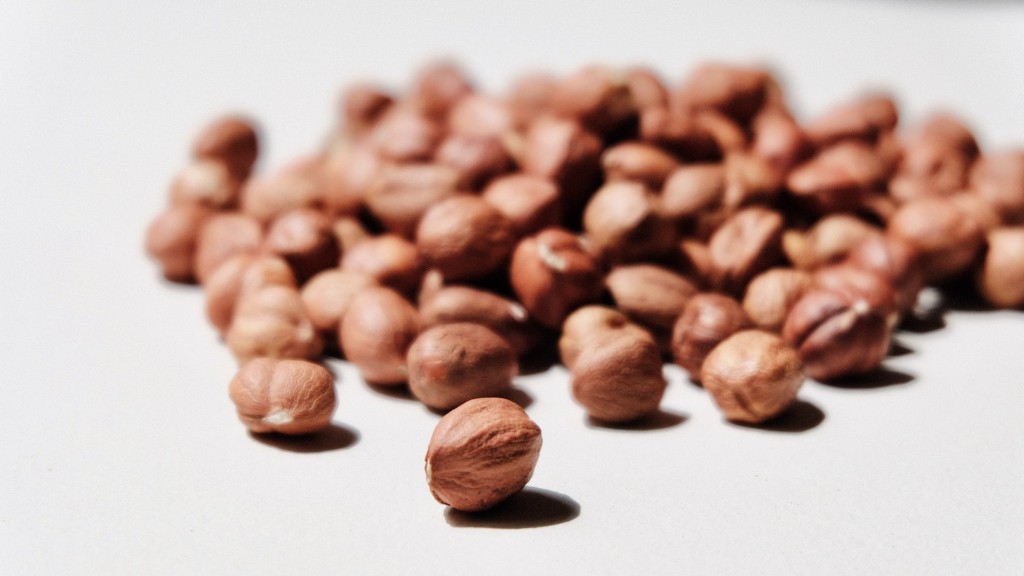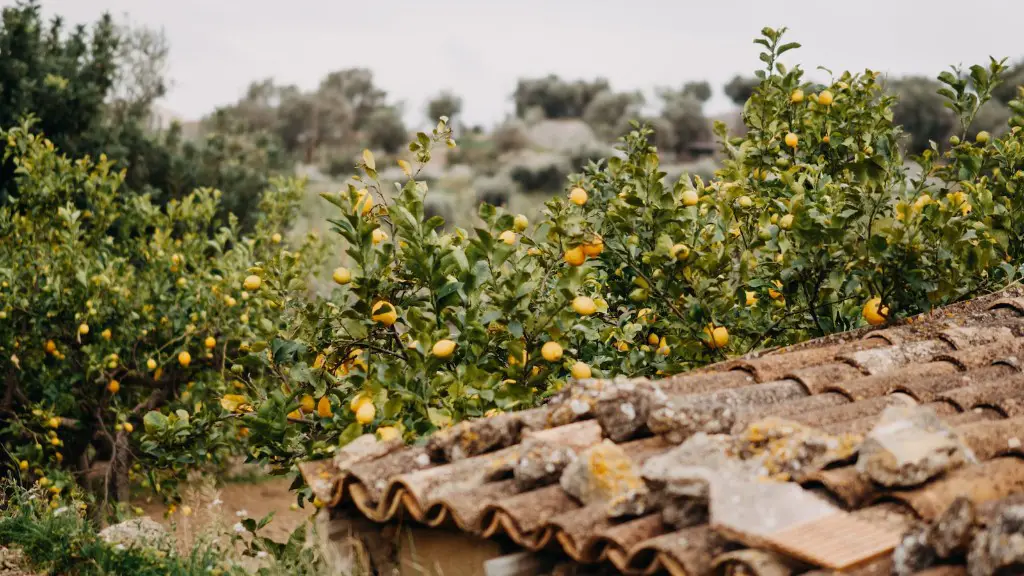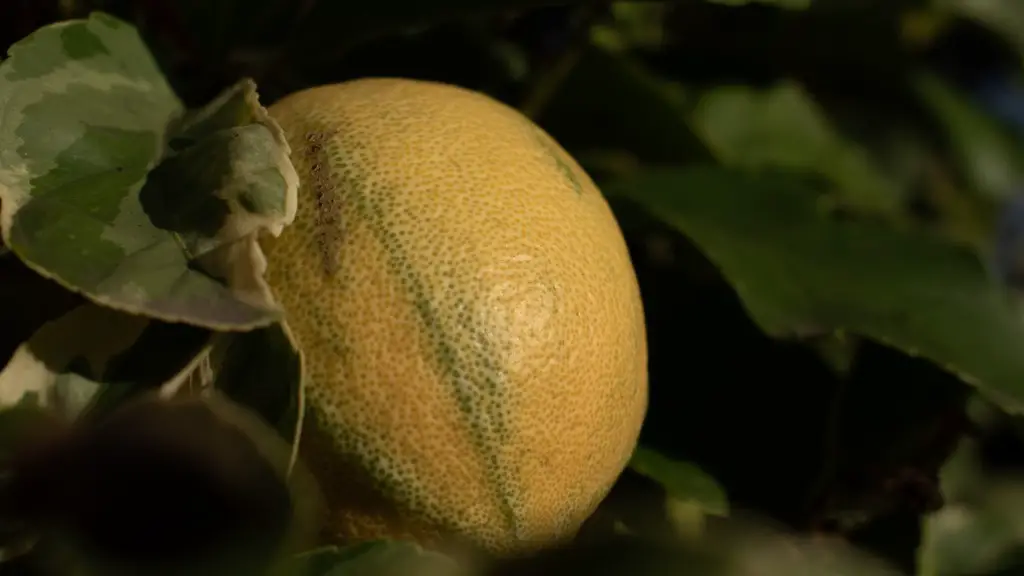Growing lemons on a lemon tree is a rewarding way to add a citrusy tang to a variety of recipes and drinks. The biggest challenge for the grower is providing enough nutrients so that the tree can sustain healthy growth, not just for harvesting in the short-term but for continued growth for years to come. In this article, we’ll look at the steps that are necessary for successful lemon tree growth and fruiting in your home or garden.
Firstly, make sure that you choose the right variety of lemon tree for the space available. Different types of tree require different levels of sun and water, so checking the specific needs of your chosen variety can save a lot of time in the long run. Secondly, decide on the exact location to plant the tree. A spot that too sunny can cause the fruits to be too sour, while a spot that is too shady can prevent adequate growth and fruiting. Thirdly, make sure to fertilize the tree with the crops’ preferred nutrient mix. Using the right type of fertilizer can help promote healthy growth and bigger fruits.
Fourthly, trim and prune the tree regularly. This ensures healthy growth of the tree and prevents any parasites that could compromise the health of the tree and its crop. Fifthly, inspect the tree regularly for discoloration, wilting or spots, which can indicate a pest or disease problem. Taking time to identify the problem and take corrective action can help ensure a healthy, long-term crop. Sixthly, water the tree regularly, making sure that the soil is damp but not oversaturated. Lemon trees need a lot of water, but too much can cause them to become unbalanced or succumb to root rot. Finally, harvest the lemons as soon as they have ripened, as this will help ensure that the tree produces larger, sweeter fruits for a long time.
Troubleshooting Tips
As with any type of fruit tree, lemon trees can experience health issues due to a variety of factors. It’s important to take preventive measures to resolve these problems and help the lemon tree attain health, such as avoiding late frosts, over-watering, and nutrient deficiencies. To successfully grow, lemons require adequate sunlight, drainage and irrigation, and essential nutrients such as nitrogen, phosphorus and potassium. Additionally, regular fertilization and pruning, along with pest and disease control, should be part of the fruit tree’s overall maintenance.
Be sure to inspect the tree for signs of damage, such as discoloration, wilting or spots, as these can indicate infection or infestation by pests or disease, which can affect the tree’s ability to bear fruits. If these problems persist, try consulting a local soil or plant expert who specializes in citrus trees for advice. Avoid using chemicals as much as possible, as they can damage or kill the tree if not used properly. Instead, opt for natural methods such as companion planting, natural insect repellents, and beneficial predator insect releases, as these can help keep the pests away without damaging the trees.
Soil Preparation
Proper soil preparation is essential for growing healthy lemons. When planting, choose a well-draining, fertile soil mix and mix in organic matter such as compost. Be sure to test the pH levels, as lemon trees prefer soils with a pH level between 6.0 and 7.0. Additionally, adding mulch can help retain moisture, keep weeds away, and maintain the soil temperature. The tree should be planted in an area with plenty of sunlight, preferably 6-8 hours of direct sunlight per day, and the soil should be kept consistently moist but not soggy.
To ensure that the tree receives adequate amounts of nutrients, keep an eye on the foliage for any signs of discoloration or stunted growth, as this could be indicative of a nutrient deficiency. If this is the case, add fertilizer every six weeks. Make sure to use a specialized citrus fertilizer that is rich in nitrogen, phosphorus and potassium, as these help promote healthy growth. If the soil is still lacking in certain minerals, try using a soil supplement or soil amendment, as this can help deliver a steady stream of essential nutrients to the tree.
Providing Nutrients
To successfully grow healthy lemons, the soil needs to be adequately nourished with essential nutrients, like nitrogen, phosphorus, and potassium. The best way to provide these nutrients to the tree is by using a specialized citrus fertilizer; this will ensure that the tree receives all of the nutrients it needs for healthy growth. Fertilize the tree every six weeks to ensure that the soil remains adequately nourished. If the soil is still lacking certain minerals, supplement the soil with a soil or plant amendment, as this will help supply the tree with the minerals necessary for proper growth.
If the tree’s leaves exhibit signs of yellowing or stunted growth, this could be indicative of a nutrient deficiency; you may need to add additional fertilizer to the soil to help the tree get the nutrients it needs. Additionally, remember to check the pH level of the soil regularly and add lime if necessary to maintain a pH level between 6.0-7.0. Finally, remember to keep the soil moist to ensure proper nutrition and growth.
Growing Lemons in Containers
Growing lemons in containers is a great way to get a head start on harvesting. When planting lemon trees in containers, keep in mind that larger pots are better for the tree’s long-term health. Choose a container that has holes at the bottom to allow for adequate drainage and choose a potting mix for citrus trees, which is specially designed for optimal growth.
Remember to choose a spot with plenty of sun exposure and keep the soil consistently moist, but not oversaturated. Additionally, fertilize the tree every six weeks and check the pH level of the soil regularly. If the tree’s leaves turn yellow or exhibit signs of wilting, this could be indicative of a nutrient deficiency, so be sure to add the appropriate fertilizer to the soil. With proper care and maintenance, a container lemon tree can provide you with sweet, juicy lemons for years to come.
Propagation and Pruning
Propagating and pruning your lemon trees can help promote healthy growth and improved fruit yields. Lemon trees can be propagated by air-layering or by grafting onto a suitable rootstock. Air layering is a great option if you don’t have access to a rootstock or are in a hurry to get your lemon tree fruiting. On the other hand, grafting onto a rootstock is ideal for producing vigorous and sturdy root systems, which can ensure a better return on fruits.
When it comes to pruning, it’s important to remember that lemon trees need to be pruned regularly. Pruning helps reduce crowding and promotes the growth of new blossoms, which increases the tree’s overall fruit production. To prune a lemon tree, start by removing any dead or diseased branches, then shape the tree and reduce the canopy by selectively pruning its branches. Be sure to trim the tips of branches to encourage new growth and thin out old branches as they can squeeze out potential new fruit-bearing branches.
Finally, it’s important to remember to prune the roots of the tree every two to three years to stimulate the growth of new ones. Doing this helps promote healthy, vigorous root systems and ensures that the tree receives adequate amounts of oxygen, water and nutrients, which are key for healthy growth and fruit production.
Disease Control
Disease control is an essential part of growing lemons on a lemon tree. To ensure healthy growth and fruit production, trees should be inspected regularly for signs of disease or infestation, such as discolorations, wilting or spots. Taking preventative measures to identify and treat the problem early is crucial for avoiding long-term damage and promoting healthy growth.
Fungicides can help prevent certain plant diseases, such as powdery mildew, by creating an invisible barrier that stop spores from attaching to the tree’s leaves and stems. For pest control, insecticides or natural predators, such as ladybugs and praying mantis, can be used to get rid of any unwanted insects. Additionally, rotating crops and removing any infected leaves can help prevent fungus and virus buildup. Be sure to follow the instructions on the product label when using any insecticides or fungicides, and to consider natural methods of pest and disease control as well.




